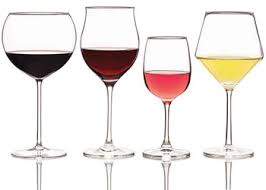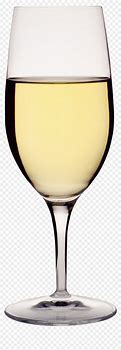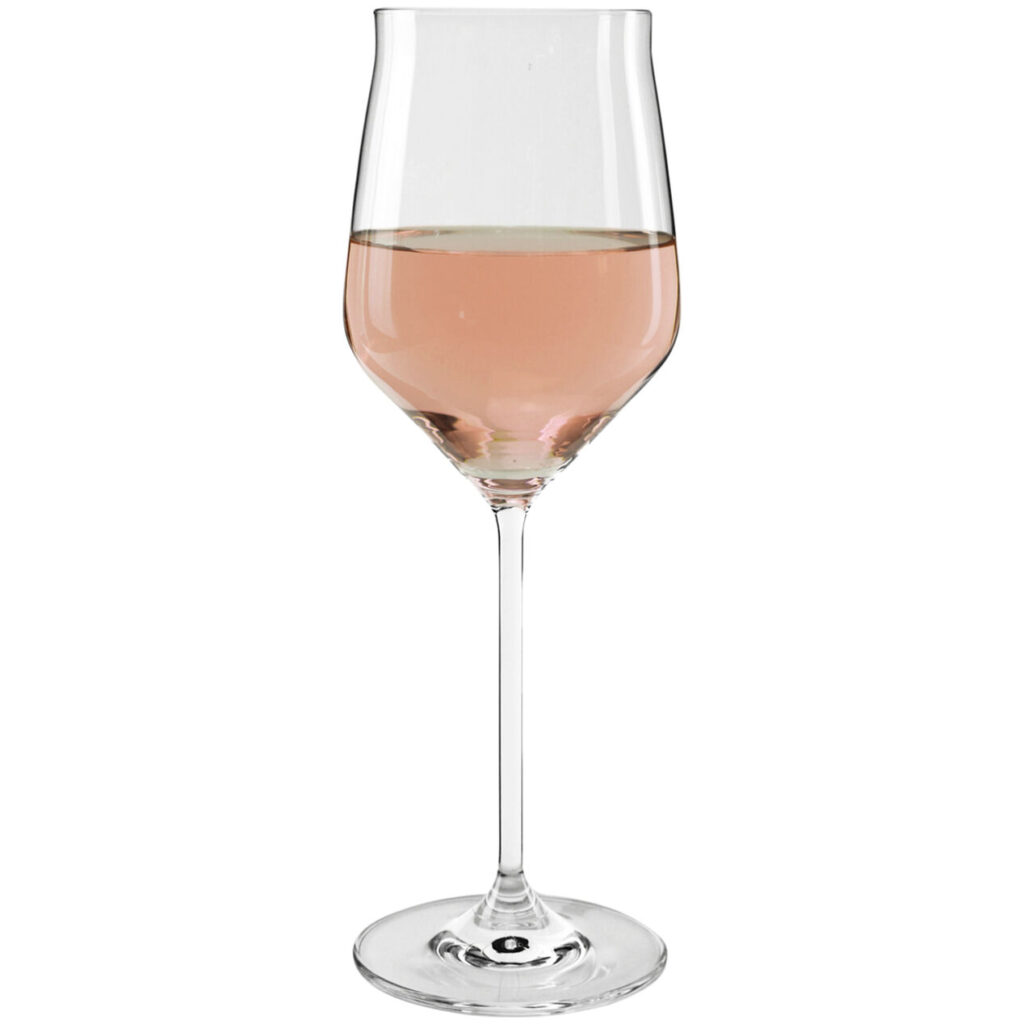Different wine glasses types are made to bring out the flavor and aroma of various kinds of wine. As a matter of fact, wine glasses are designed top to bottom to elevate the experience, giving each wine variety its own distinctly shaped glass.
For instance, compared to white wine glasses, red wine glasses have a larger bowl and a taller stem. The wine has more surface area in the bigger bowl, which allows it to air or oxidize. Red wine’s tannins are softer after oxidation, which enhances flavor and lets the wine’s natural aromas come through. Because of the way the wine glass is shaped, tannins—compounds that provide a drying sensation in the mouth—are less noticeable. To keep white wine fresh and crisp in the glass and to prevent excessive oxidation of the wine, white wine glasses are smaller in capacity and egg-shaped with a small mouth.
Anatomy of a Wine Glass
Foot
The foot is the base of the wine glass and keeps it balanced. Stemless wine glasses do not have a distinct foot.
Stem
The stem is the slender bridge of glass between the Foot and the Bowl. You hold onto the stem as close to the foot as you can in order to keep your body heat from raising the temperature of the wine and allowing you to enjoy the wine at optimal temperature. You should never “cup” the bowl of the wine glass. In addition, holding the stem as close to the foot as possible prevents odors from your hand (lotions, perfumes, etc.) from interfering with the taste of the wine, as smell strongly influences taste.
Bowl
The configuration and dimensions of the bowl affects how aromas are released and captured. Achieving an effective swirl starts with pouring wine to around one-third of the bowl’s height. This allows room up the sides to swirl the wine, unleashing its aromas. Therefore, when selecting robust red wines, it’s advisable to select a generously sized glass that facilitates aeration and oxidation. This will allow the evaporation of undesirable elements such as ethanol and sulfites, thereby allowing the intricate flavors to mature. Conversely, when it comes to white wines, maintaining their inherent crispness is paramount, making prevention of oxidation the ultimate goal.
Rim
The dimensions and contour of the rim channel the wine toward the optimal region of the palate. Narrow openings guide the wine to specific parts of the tongue, accentuating or diminishing particular characteristics. For instance, a compact opening can amplify sweetness while harmonizing or neutralizing the acidity. Moreover, narrow rims confine aromas within the glass and guide your olfactory senses, maintaining your sense of smell’s involvement. In the case of wines possessing heightened complexity and diminished acidity or fewer tannins, a wider opening glass is commonly used to distribute the beverage across the palate. Irrespective of the design, thinner glass rims facilitate the finest tasting encounter, as the wine seamlessly transitions from the glass to your palate.
Red Wine Glasses Types
Cabernet Glasses – best for Cabernet Sauvignon, Malbec, Tempranillo
Featuring a broad bowl and a tall stem, Cabernet glasses are frequently used as the standard red wine glass. The wine will oxidize or breathe more easily in a larger bowl because of the increased surface area. Red wine’s tannins—compounds that provide a drying sensation in the mouth— are softer after oxidation, which enhances flavor and lets the wine’s natural aromas come through. This is crucial since a significant portion of what you sense when drinking wine is scent. Because of the way the wine glass is shaped, tannins are less noticeable. Consider using a wine decanter to give a wine time to breathe before pouring it into a glass.
Burgundy Glasses – best for Burgundy, Barbaresco, Barolo
With their distinctive fishbowl shape, Burgundy glasses effectively capture the scents of full-bodied wines. It also counteracts the wine’s astringency. The wine does not require as much swirling to savor the scents because it is made from thin-skinned grapes. By placing the wine closer to the center of the palate, the narrow rim reduces acidity.
Bordeaux Glasses – best for Bordeaux, Cabernet Franc, Cabernet Sauvignon, Merlot
A Bordeaux wine glass enhances the qualities of strong, rich red wines. Differing from Burgundy wine, Bordeaux wine comes from thicker-skinned grapes. It is best when it’s swirled and allowed to oxidate (breathe). Therefore, Bordeaux glasses are taller. This helps to optimize the most surface area of wine exposed to air as you circulate the liquid in the upper portions of the glass. The large bowl of this glass helps to release the wine’s bouquet. Its narrowed rim allows a more enjoyable taste experience of the dynamic variety of fruit flavors and soft tannins.
Zinfandel Glasses – best for Zinfandel, Chianti, Rioja Crianza, Sangiovese
The bowl shape of Zinfandel glasses is designed to extract the best attributes of medium-bodied red wines like Zinfandels. This type of glass perfectly balances sweetness and fruity acidity, and allows the wine to flow to your palate through a narrower opening, highlighting lightly spiced berry notes. The smaller bowl of the Zinfandel glasses subdues the taste and smell of alcohol present in zinfandel varieties with a medium-to-high alcohol content. In addition, the smaller opening helps to balance out any potential mouth-drying effects some zinfandels create due to having more tannins.
Pinot Noir Glasses – best for Pinot Noir, Barbera, Dolcetto, Gamay
By exposing a significant portion of the wine’s surface to oxygen, the balloon-shaped large bowl of pinot noir glasses is perfect for capturing the complex characteristics and releasing the Pinot Noir’s delicate and subtle aromas. Additionally, the distinctive shape allows ample swirling and sniffing and aids in aroma entrapment. Pinot noir glasses direct the wine to the front of the mouth, accentuating sweet flavors while tempering acidic ones.
White Wine Glasses Types
Sauvignon Blanc Glasses – best for Sauvignon Blanc, Albariño, Chenin Blanc, Grüner Veltliner, Pinot Grigio, Riesling, Semillon, Viognier, and lighter rosés
White wines like Sauvignon Blanc are best consumed from a glass with a narrow bowl, limiting oxidation which can compromise their bright flavor characteristics. When combined with a narrow opening, it will help to keep the wine chilled. In addition, the narrow opening directs the wine to the center of the tongue to highlight light flavors while reducing any acidity.
Chardonnay Glasses – best for Chardonnay and fuller rosés
Somewhat similar to the Sauvignon Blanc glass, the Chardonnay glass has a slightly wider mouth. This design releases a broad range of aromas from full-bodied white wines. The slightly larger bowl of a chardonnay glass balances out oaky notes and allows more exposure to air, letting the wine open up to reveal other tastes. Its opening evenly spreads the wine across the palate, bringing complex layers of flavor into focus. And the shape allows your palate to pick up the wine’s acidity and help you appreciate the balance of fruit flavors.
Rosé Wine Glasses Types
Rosé Glasses – best for Rosé and sparkling wines
The Rosé Glasses feature a relatively wide bowl of angular design, but a tapered and narrow opening. Effectively, the design allows these wines the room they need to develop the bouquet while directing the sweet effervescence to the front of the tongue.
Port and Dessert Wine Glasses Types
Port and Dessert Glasses – best for Port, Madeira, Sherry, and fortified wines
These petite glasses are ideal for enhancing the deep richness of port wines. The rich, fruity tastes of the wine are encouraged to overpower its high alcohol concentration by the narrow mouth and slim shape of the glass.
If you are interested in learning more about wine and our wine program, please visit the Wine Education page and the Fine Wines page. In addition, another interesting page compares Wine to Poetry.




